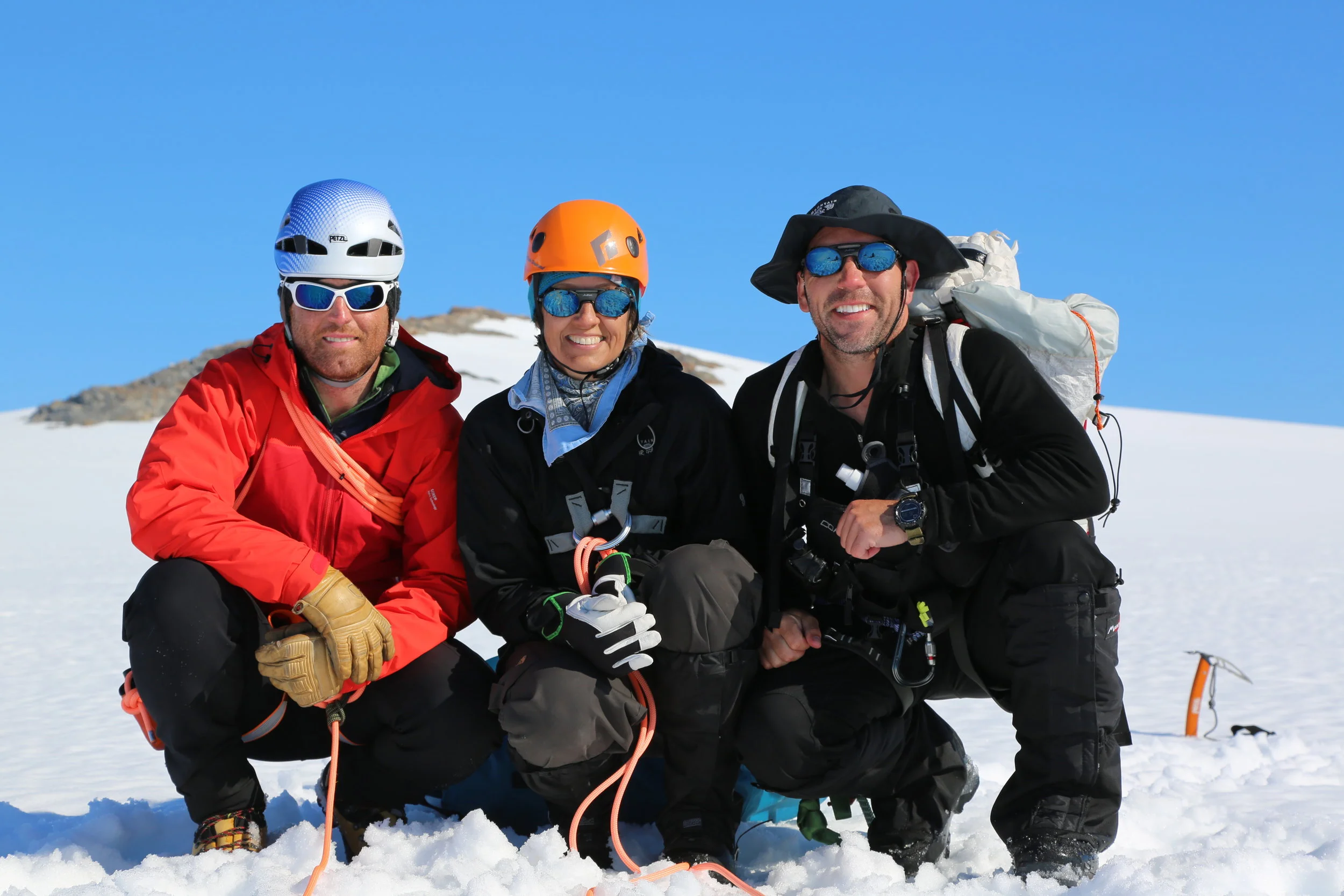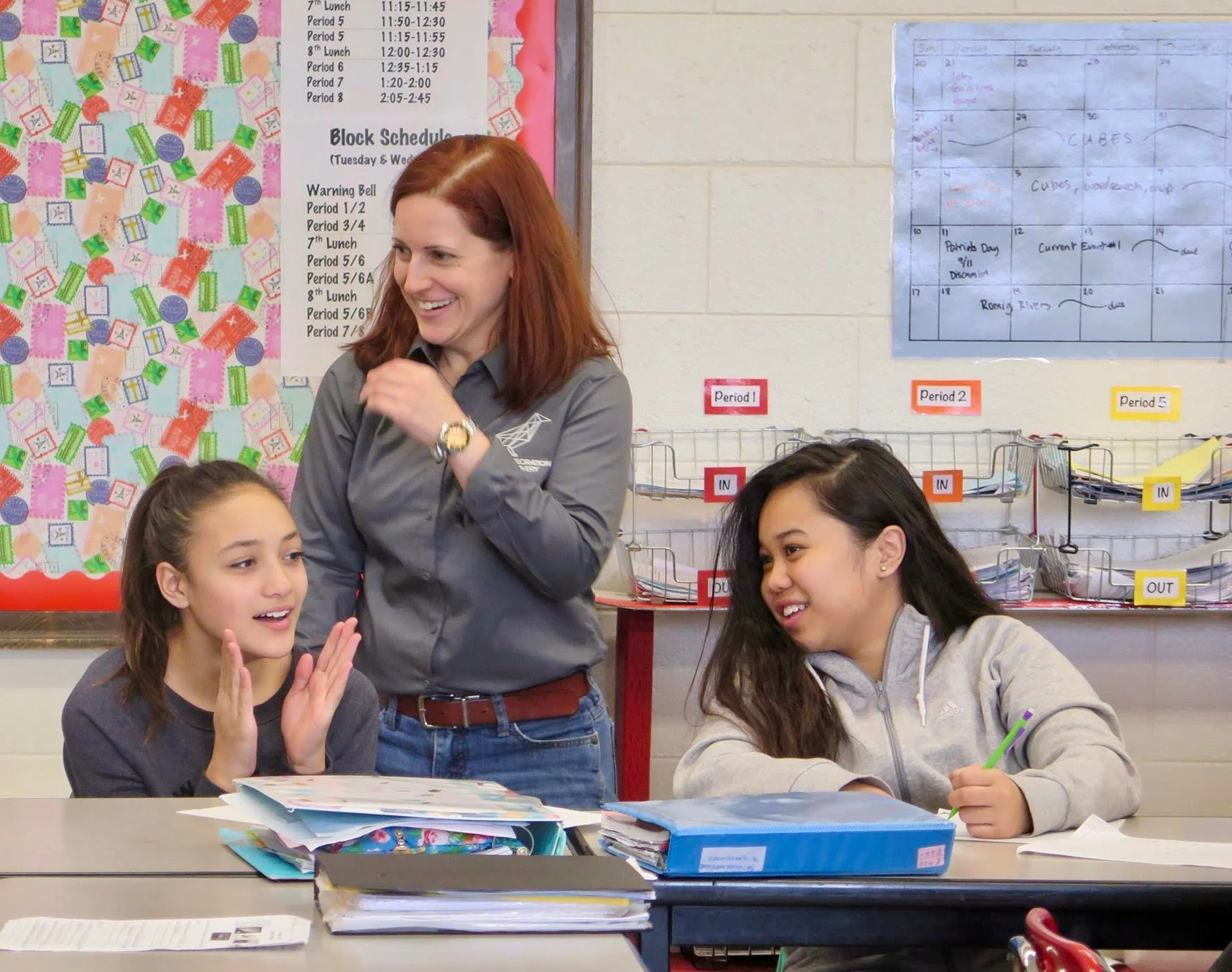Our Story
The story of GEaR began in 2010 when John Bradley and Frank Marley found themselves together on a Coast Guard mission in search of the Duck in Greenland. Though they were both working for a private contractor at the time, the power of the WWII story and the commitment of the US Coast Guard to bring their men home was infectious. Despite the mission not locating the plane or the men within her, John and Frank's interest was sparked. They set forth their intention to be involved in the search at each and every opportunity going forward
John Bradley and Francis Marley
Jaana Gustaffson
That next opportunity came two years later, in 2012, when John and Frank were once again tapped for a mission to Greenland in search of the Duck. It was on this mission that they met Jaana Gustaffson (geophysicist and radar expert), Nicholas Bratton (an addition to the safety team), and Mitch Zuckoff, a bestselling author who was writing a book on the WWII story and the modern effort to locate the missing men. The 2012 mission culminated in the discovery of debris from the wreckage, and a plan to return the following summer. Through their work together, John, Frank, Nick, and Jaana developed deep friendships that would become the nucleus for GEaR.
In 2013 Mitch published his book "Frozen in Time", which chronicled the WWII story of survival and sacrifice in Greenland, as well as the team's 2012 mission to locate the Duck. John, Frank, Nick, and Jaana are all featured in the book, and have maintained their friendship with Mitch, who continues to follow the work to recover the three heroes in the Duck. The book would go on to become a New York Times Bestseller as it captured the hearts and minds of readers, much as the story had already captured the resolve of our team.
Mitchell Zuckoff
Nicholas Bratton
In 2013 the team returned to Greenland, once again as part of a broader Coast Guard effort, to spend nearly four months on the ice in search of the Duck. With the evidence and debris found at the end of the previous year's mission, optimism was high that the goal would be accomplished. Unfortunately, the debris did not lead to the site of the wreckage and the missing men. Upon returning from this mission, John and Frank undertook a cross-country equipment logistics trip, where they discussed their commitment to continuing the search - the idea of GEaR was born.
Global Exploration and Recovery LLC
In 2015, after many lengthy discussions, research, and investigations, GEaR was formed, and paperwork was filed to found an Alaska-based company focused on finding the Duck. It was through this process that Leann joined the team, acting as the agent of record GEaR. The team, founded on a mutual passion for the recovery and repatriation of the heroes in the Duck, and a belief in the benefit of a light-and-lean approach to expeditions, began preparing mission plans as GEaR.
2016 Expedition
The team developed and honed their plans for an expedition to Greenland throughout 2015 and the beginning of 2016 - the centennial of Coast Guard aviation. With support of friends, family, and interested followers, enough money was raised to send John, Frank, and Jaana to the ice. The team would attempt a bold approach that was yet to be successful, or even considered: to travel by boat to a beachhead and pack equipment up to the glacial campsite. Balancing time, weather, equipment availability, and the physical strength and endurance of the team - the plan was finalized. The team traveled by open skiff for over 120 miles through ice floes to land on a rocky beach, where all of the equipment was offloaded. The next challenge involved three days of manually hauling the team's equipment to the campsite, up and back on a trail pioneered by the team. Once base camp was established, the team then had to hike six hours round-trip to the search site, each time crossing highly dangerous crevasse fields. Though the challenges were many, the team was able to safely meet the challenges of each step in this untested approach and conduct the all-important radar work. Though the team didn't ultimately identify the crash site during multiple weeks on-site, GEaR's first mission was a successful test of methods, approach, and the resiliency and determination of our team.
Christie Fisher at Romig Middle School
While the team was making final preparations for the 2016 mission in Iceland, Frank met up with Christie, who was following GEaR's work and offered to help. Upon the team's return from Greenland, Christie worked closely with the team to transform GEaR into a federally recognized non-profit, with our status dating back to our formation in 2015. Our non-profit mission and goals now included an educational element, and Christie oversaw fundraising efforts that enabled GEaR to undertake additional missions. During this time of transformation, Officers and Directors were elected, solidifying the roles of John, Frank, Nick, Christie, and Leann on the team, with Jaana continuing to serve as our chief geophysicist.
Global Exploration and Recovery Inc
As an officially recognized non-profit, 2017 saw GEaR's first engagement in classrooms, as well as a research mission to Greenland designed to discover any additional information that may inform future missions to the ice. John traveled to Greenland and met with librarians, museum staff, and local elders to gather stories, insights, and archived information. John also presented our story to the local schoolchildren, furthering our commitment to educational engagement.
June 2018 our organization has earned a 2018 Bronze Seal of Transparency on @GuideStarUSA.
J2F-4 Grumman Taxiing away from Northland
GEaR is currently planning a summer 2018 mission to continue our search for the Duck, with John, Frank, Jaana, and Christie planning to participate. John, Frank, and Jaana will run radar over search areas of interest, while Christie will manage base camp and educational outreach efforts for the team. With a successful 2016 under our belts, GEaR's goal is raise enough funds to secure helicopter support for our team, and is continuing to fundraise, seek sponsors, and broaden the awareness of not only our mission, but the story of heroism so integral to the story of the Duck.
During our 2018 expedition, the team focused its survey on an area of the glacier that is consistent with historical records of where the plane crashed and how it might have moved over time in the shifting ice. No prior missions investigated the vicinity where GEaR discovered the anomaly. Analysis of radar data suggests that the anomaly is the same size as the missing plane, is at a depth within the expected range, and is not a natural feature like an air pocket, rock, or crevasse.
New Anomaly Discovered In Greenland Icecap In Search For Missing American Aviators










